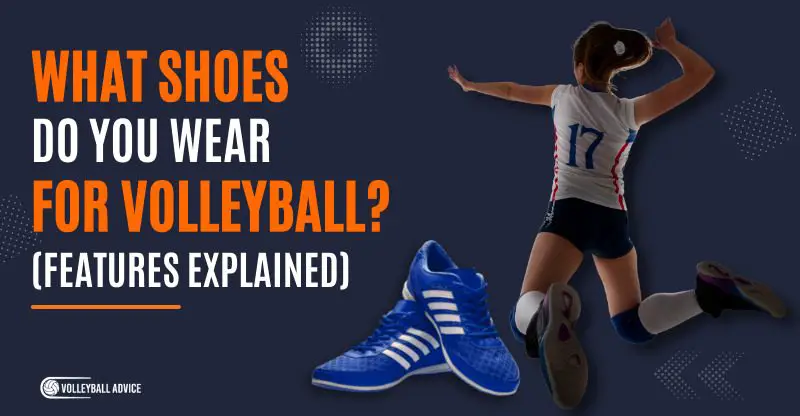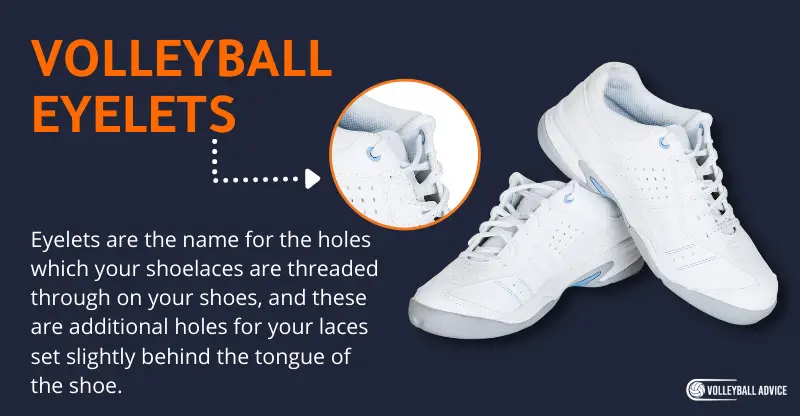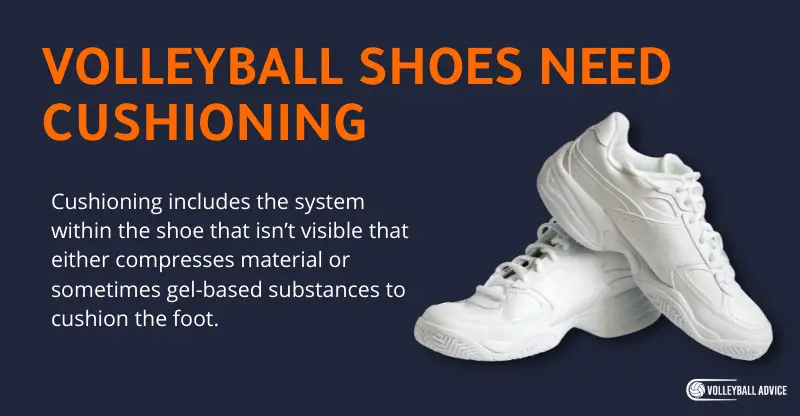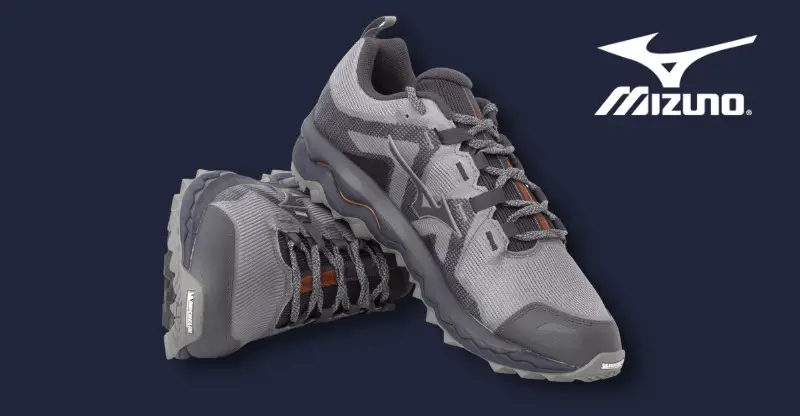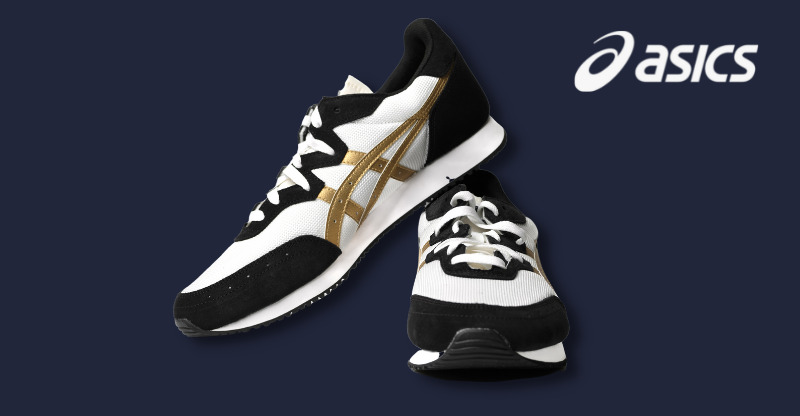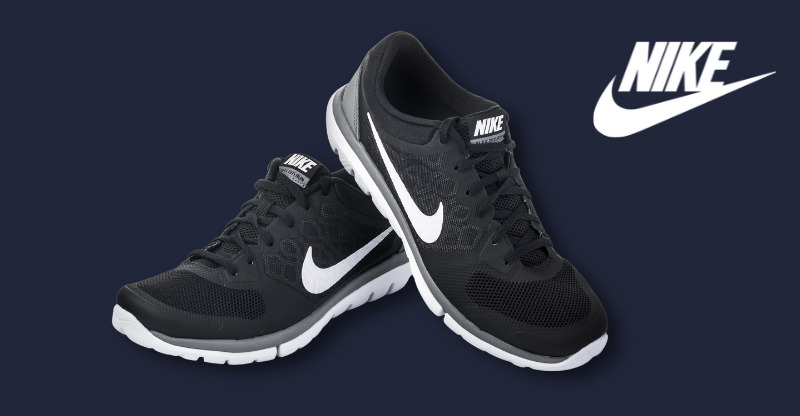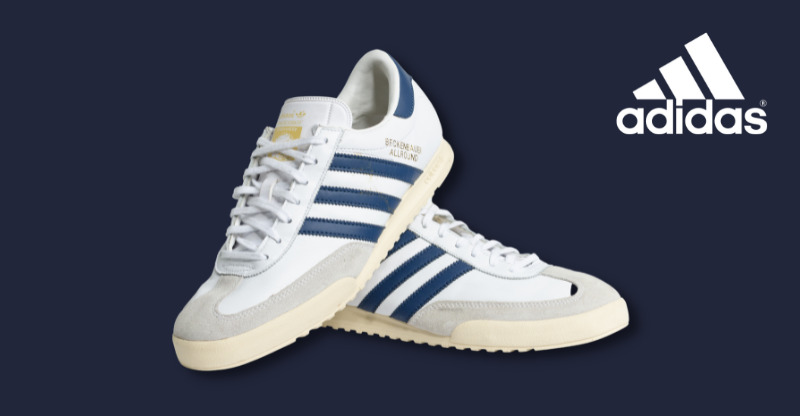What Shoes Do You Wear For Volleyball? (Features Explained)
Some links in this article are affiliate links, which means I earn from qualifying purchases.
Finding the right shoes to wear for volleyball can be a little intimidating.
If you walk into a shoe store, most employees have no idea what the sport entails, and so bad advice is often given. This leads to getting a shoe that either decreases your performance, increases your chance of injury (especially if you wear a running shoe), or limits the lifespan of your shoe.
Bad advice is the worst, but you’ve come to the right place.
What shoes do you wear for volleyball? For volleyball, you should wear a shoe with a gum-rubber sole, volleyball eyelets for laces, good ankle support, and a decent amount of cushioning. While volleyball-specific shoes are always recommended, some basketball shoes can also provide you with the necessary traction to optimize your volleyball performance.
Everyone has different preferences and positions that they play in volleyball, so choosing the right one can make a big difference. When you’re just starting out, a general understanding is usually good enough to give you an idea of what to look for, so I’ll be sharing some of the best brands to look at and what features are a must-have in a volleyball shoe.
Note: If you want my top recommended volleyball shoes for different positions and skill levels, check out my article on the Best Volleyball Shoes.
4 Must-Have Features In A Volleyball Shoe
There are certain features that all volleyball shoes must have:
- Gum-rubber sole
- Volleyball eyelets
- Ankle support
- Cushioning
Gum Rubber Soles
Gum rubber soles are non-marking soles made of a special kind of rubber and are specifically designed to improve your traction and grip on a volleyball court.
Without these, your shoes will slide across the court and you may even lose your footing and risk injury.
Lightweight and useful, this is the number one most important thing to look for in your volleyball shoes – without it, they can’t even be called volleyball shoes.
Note: If your shoes are slipping on the court, check out my article: How To Fix Slippery Volleyball Shoes.
Volleyball Eyelets
Eyelets are the name for the holes through which your shoelaces are threaded on your shoes, and these are additional holes for your laces set slightly behind the tongue of the shoe.
Threading the laces through here seats the player back in their shoe more comfortably and securely, reducing wiggle room and conforming the shoe to the player’s foot.
This is important for quick movements and the way that dynamic movement can roll the foot around within the shoe when under duress and quick changes of direction. These eyelets help prevent that.
Importantly, not all players use these, and many don’t even realize that their shoes have them. It’s an important feature to know about though, and will help you get the most value from your shoes as possible.
Ankle Support
Ankle support is essential and comes in the form of strong sides of the shoe that buffer the ankle if it begins to roll, combined with proper shaping within the shoe to secure your foot.
Certain shoes are better at this than others and are designed with injury prevention in mind, while others can take a more minimal approach in favor of remaining lightweight.
Look at the name and general description of the shoe you’re considering to see if it is a primary feature or secondary consideration – not all shoes are alike. Choose the level of safety you are most comfortable with.
Even if your shoe does not have high sides, you can further bolster your ankle safety by buying an ankle brace to insert into your shoe with your foot. Used together with good ankle-supporting shoes, this is the best way to prevent ankle injuries – the most common injury in volleyball.
Cushioning
Last but not least, volleyball shoes need cushioning.
This is incredibly important for a jumping-based sport like volleyball, as jumping over and over on hardwood floors can cause your feet to ache and even bruise or blister without the right cushioning.
Cushioning includes the system within the shoe that isn’t visible that either compresses material or sometimes gel-based substances to cushion the foot, the fabric within the shoe on which your foot rests, and lastly the gum-rubber sole – multi-purposed as it is.
Beginner vs Advanced Volleyball Shoes: What to Look For?
Depending on how seriously you take the sport, and how often you play, you might want to consider your shoe choice more carefully.
Here’s a quick breakdown of what beginners should look for versus more advanced players.
Beginner Volleyball Shoes
For beginners, any shoe that is labeled as a “volleyball shoe” will be a good fit. There’s no point in specializing with certain features when you’re just starting. If you already have basketball shoes, you can even use these while you’re figuring out what features you like best, but stay away from running shoes.
What you need is a shoe that provides a good grip and supports your ankles to prevent injury.
Asics is a good brand to invest in for first volleyball shoes because they’re a little cheaper and can generally succeed for any player. That doesn’t mean they’re bad shoes at all — my entire family is all using Asics shoes for this upcoming season.
Playing in cheaper or less specified shoes will help you find shortcomings in them, and this is a good thing. Knowing what you like and don’t like, or what you need more of, will help inform you about the path forward in buying shoes from there.
To be honest, what’s going to make you a better volleyball player as a beginner is not your choice of shoe, but rather, it’s working on your technique, footwork, and becoming better at your position.
Advanced Volleyball Shoes
When you become a more advanced volleyball player, you need to know what position you play and find the shoe that best supports your role. My quick rule of thumb is that spikers need cushioning, passers need grip, both need ankle support.
Setters are in a weird position where there is no defining rule that helps: they’re a force of nature of quick-firing nerves and no two playing styles are the same. Therefore, a more all-around shoe is best.
In the next section, I’m going to discuss differences in shoes for different positions. The more advanced you are, the more this next section will apply to you. Don’t sweat the nuance if you’re a beginner though.
The Right Shoe For The Right Volleyball Position
There are no specific types of shoes within volleyball; only some that work better for different positions.
Almost all of them can be used successfully for every position without needing to worry too much about it.
This section will cover what to look at for different positions. Find what you’re most comfortable in that lets you get your feet to the ball in time, and you’ll be fine.
Outsides
You are all about cushioning. You jump the hardest in the game, and the only ones who should be out jumping you are the middles – if their conditioning is high enough.
The difference is that you jump the hardest with the most maintained momentum, hitting with the most power. In order to keep that up for the whole game, you need shoes that will disperse the impact as much as possible and be gentle on your legs.
If you find that your ankles feel weak when landing or transitioning, try the Volley Elite MT by Asics for a more stable base.
Middles
You are all about ankle support. While grip and cushioning are very important for middles as well, your life revolves around dynamic split steps and moving from one side of the net to the other.
You have the most distance to cover in opposite directions and the most feet to potentially land on – both of which are leading causes for ankle injuries on the court. You will feel safer and last longer before getting tired with proper ankle support, so there’s no reason to avoid it.
If your legs hurt from jumping, try instead a cushioning-centered shoe like the Z4 Lighting by Mizuno and buy an insertable ankle brace.
Either way, you need the support.
Liberos
You are all about grip.
Liberos, like middles, need to change directions rapidly and react to incoming spikes and powerful balls. Because of this, you need to be able to move the instant you think about it, and using a shoe with great grip will get you there that much faster.
If you find that you want to focus a bit more on ankle support and durability to get right back into things after a dive, try the Mizuno Wave Momentum. A bit pricier than some other options, but one of our best picks for liberos.
We also ranked the Mizuno Wave Momentum #1 as the Best Volleyball Shoes For Jumping.
Setters
You need grip, cushioning, and ankle support, but you will have your own favorites.
My personal belief is that setters should have very grippy shoes for the precise movements needed to position under the ball just right.
Other setters I’ve played with have gone for cushioning because they set from their highest point of contact every time and enjoy spiking or dumping the ball over the net a lot.
My pick for setters is something lightweight and breathable with good grip, such as the GEL-Rocket 9 by Asics.
4 Most Popular Volleyball Shoe Brands
The brands below are the four most popular for volleyball shoes, but they are also arguably the only ones to consider.
Off-brand volleyball shoes might be cheaper, but you risk injury while not getting the same quality of performance.
Stick to the tried and true; if they’re good enough for the pros, they’re good enough for you.
Mizuno
Mizuno are the premier volleyball brand in the world, especially for volleyball shoes. Their products are consistently top quality and used by professionals all over the world, with some of the largest selection and most advanced in-shoe systems to draw the best performance out of every athlete.
However, Mizuno products can be very expensive, so be prepared to drop a few bucks if you’re committed to their line. Because they’re so well made though, you will have them for a while.
Some popular Mizuno volleyball shoes are:
Asics
Although Asics might just look like a cheaper option at first glance, they are still very well-made and reliable shoes.
Being cost-efficient and mainly focusing on good grip, they are lightweight and trustworthy. These are great first shoes for new volleyball players but also a reliable staple for experienced players.
Asics customer service is also usually top-notch.
Some popular Asics volleyball shoes are:
Nike
It seems only natural that a basketball shoe company would also make shoes for volleyball since the sports are so similar.
While court shoes have their own design and place within the game, Nike’s shoes are different from other companies’ takes on the footwear and some might not even consider them true volleyball shoes.
However, they have great ankle support and traction and can be used successfully for either basketball or volleyball. It’s worth noting that they usually feel a bit heavier though, so can tire a new player out who isn’t used to jumping all the time.
Great company to buy things from if you’re a multi-sport athlete.
Some popular Nike court shoes are:
Adidas
More of an in-between shoe similar to Nike, but costing closer to Asics, these shoes are more of a court shoe than true volleyball style.
A bit bulkier and heavier than Mizuno or Asics options, they provide a solid base and good ankle support. Historically, Adidas have found a bit more success making women’s volleyball shoes than men’s, but worth exploring nonetheless.
Not many downsides, but not many upsides either: a good first choice for this kind of shoe though, and lower budget than Nike for a multi-sport shoe choice.
Some popular Adidas court shoes are:
Final Thoughts
If you want to read specific reviews of volleyball shoes, then check out my article on the 8 Best Volleyball Shoes where I’m sure you’ll find a great pair for your level and position.
When looking for shoes to buy for volleyball, you should choose a shoe with a gum-rubber sole, volleyball eyelets for laces, good ankle support, and a decent amount of cushioning.
Other Shoe Resources
- Do Mizuno, Ascics, Adidas, or Nike Make Better Volleyball Shoes?
- What Are The Differences Between Men’s & Women’s Volleyball Shoes?
- How To Fix Slippery Volleyball Shoes (8 Tips)
- Can You Wear Basketball Shoes For Volleyball?
- Can You Wear Running Shoes For Volleyball?
- Can You Wear Volleyball Shoes Outside? We Asked A Coach
- Best Asics Volleyball Shoes
- Best Nike Volleyball Shoes
- Best Mizuno Volleyball Shoes
About The Author
Ailan Samuel is a writer and athlete who has played volleyball at the university, club, and national level since 2012. He has competed successfully in both beach and indoor competitions, resulting in four silver and two gold medals, and was awarded the Half-Blue while playing in Scotland. He received his MA in English and Medieval History from the University of St Andrews, Scotland, and is currently studying for his MA in Publishing and Creative Writing at Bournemouth University.

